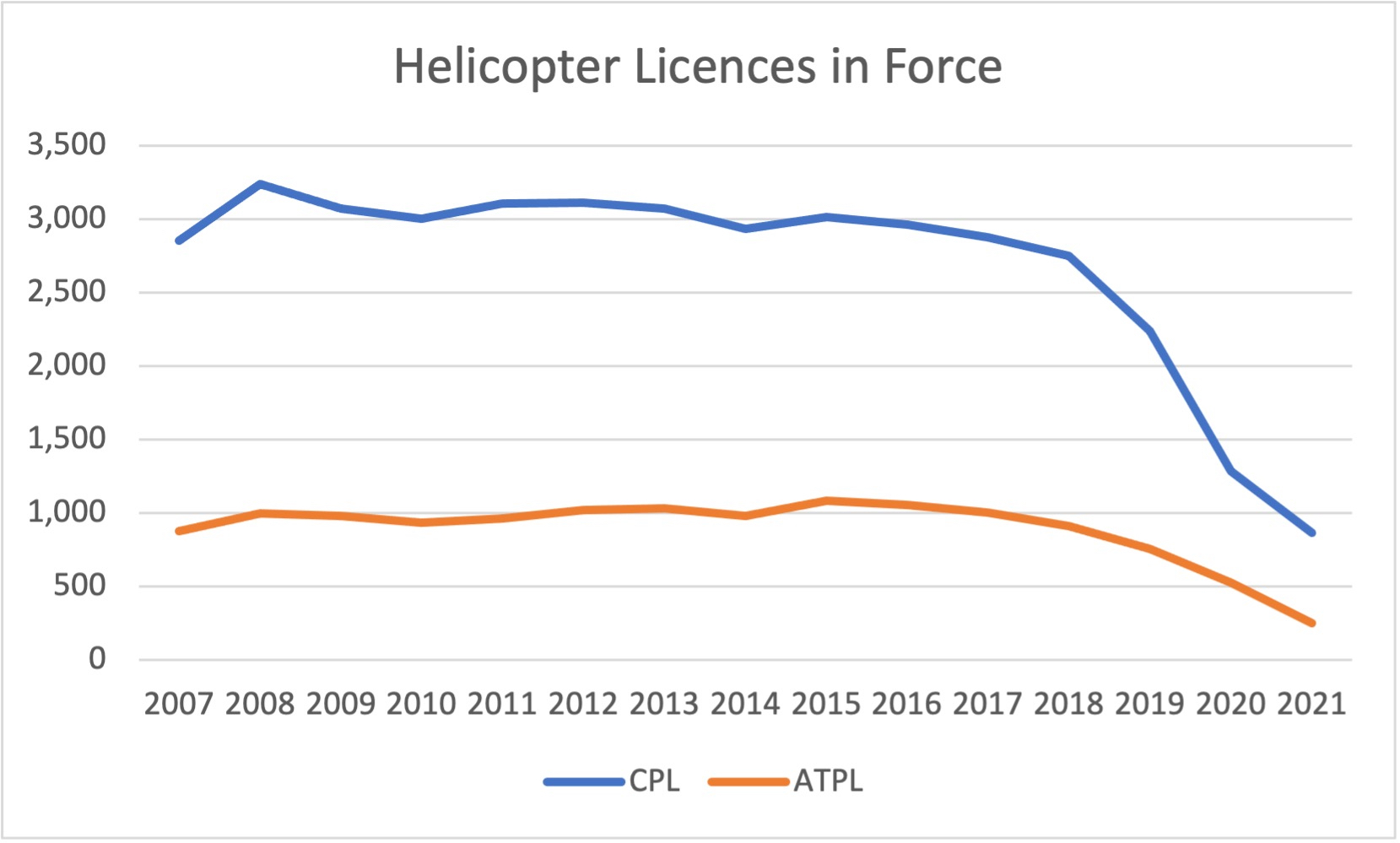
There was already a downward trend in the number of helicopter pilot licences in force in Canada before the COVID pandemic hit, and it has only gotten worse. The decade leading up to 2016 saw a fairly stable number of both commercial pilot licence (CPL) holders, averaging 3,034, and airline transport pilot licence (ATPL) holders, averaging 989. The decline began in 2018, getting worse in 2019 before dropping precipitously in 2020, the year that pandemic lockdowns began. The statistics Transport Canada provided only go to 2021, but word is that the number for 2022 are worse yet. Undoubtedly, some delay can be attributed to the delays experienced by new pilots awaiting their licences and those awaiting medical recertification. And there is no indication that the numbers will recover anywhere near the numbers from 10 years ago, as training costs continue to escalate; obtaining a helicopter CPL typically costs from $80,000 to $100,000.

While it is true that some aerial work that was traditionally performed by helicopters is now being perform by drones, such as filming and pipeline patrols, this represents a small percentage. Personnel transport to remote work sites, heli-ski operations, privately contracted search and rescue operations and sightseeing/tourism account for much of the work.
One vital area, however, that is beginning the feel the pinch is medevac services.
According to McGill University’s John Gradek, the coordinator of that school’s aviation management program, many factors could be at play. He cited pilots retiring and pilots switching to better-paying fixed wing operations as examples. He also highlighted training costs.
“It is an expensive career choice,” Gradek said, and suggested that better salaries could be a way to attract new pilots and keep existing ones in the industry. “Unfortunately, we may be in a situation where we have to ration the availability of ambulance pilots to, in fact, kind of temper the growth that the provincial governments want to see in air ambulance services.”
